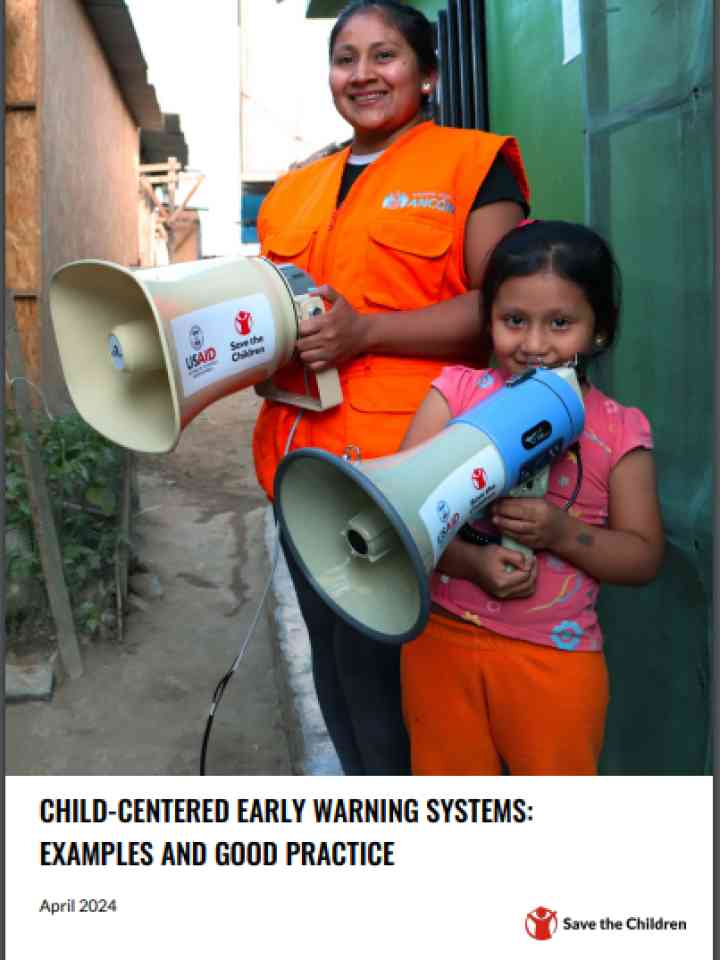Child centered early warning systems: Examples and good practice
This document outlines examples of Save the Children’s experience with child-centred early warning systems, linked to the four pillars of the Early Warning for All initiative. It is intended as a starting point for discussion and further identification of good practice examples to ensure meaningful participation of children in development and implementation of early warning systems.
Seeing and treating children as passive victims or as a homogenous group misses the vast potential of their unique and collective capacities to drive solutions. Children, and particularly those from least developed countries and small island developing states, are often the most affected by and the least responsible for humanitarian disasters. In 2023, 29.8% of the world’s population of more than 8 billion people were under the age of 18. Six of the top ten countries with the highest vulnerability, however, are also among the ten countries with the highest child population, ranging between 46.64% (Democratic Republic of Congo) and 48.85% (Niger).

